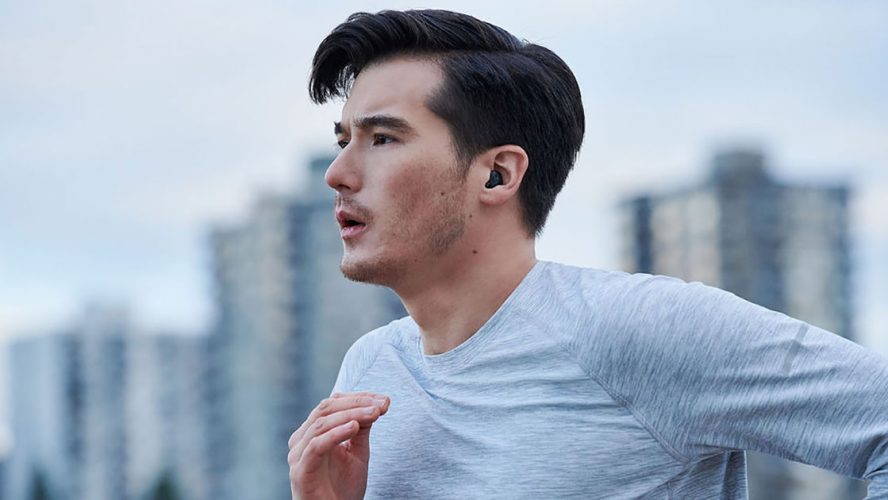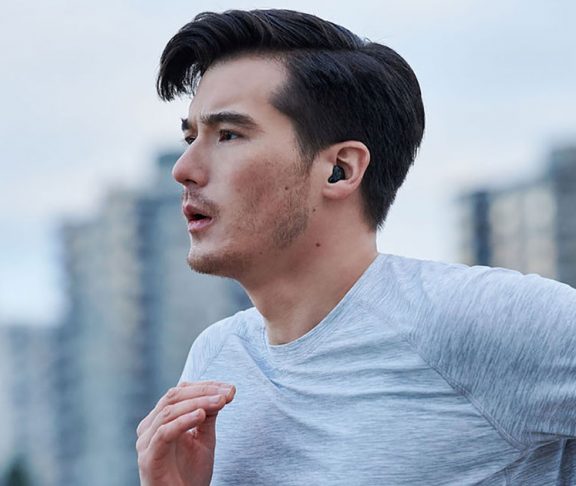Historically, people with hearing loss have been reluctant to wear hearing aids. But that’s changing. Modern technology and styling are helping make it a more positive and even fashionable experience.
Fighting stigma
Statistics show it takes a consumer seven years from the time they think they have hearing loss until they get diagnosed and treated. Untreated hearing loss could result in anxiety and depression.
“Your ears are always working and if you have hearing loss, they’re working double time trying to compensate,” says Rachel Bishop, AuD., an audiologist and launch program manager at Phonak’s global headquarters in Switzerland.
Stigma might be a factor in not seeking treatment, as people often associate hearing loss with aging.
“If you ask people, ‘Why don’t you get a hearing aid?’ patients often report that stigma has something to do with the equation,” says Gurjit Singh, Ph.D., adjunct professor at the University of Toronto and senior research audiologist for Sonova, the parent company of Phonak. He says more than half of the people in the Developed world who could benefit from hearing aids do not obtain them.”
But ignoring hearing loss doesn’t help. In fact, it may make a person’s health worse. According to a six-year study from Johns Hopkins, researchers found on average that older adults with hearing loss developed a significant impairment in their cognitive abilities, such as thinking and remembering, over three years sooner than older adults with normal hearing.
That research suggests consumers should get their hearing tested and if hearing loss is diagnosed, use hearing aids prescribed by a licensed professional.
New tech
Now there’s a new approach to hearing aids: making them as fashionable as they are functional.
Phonak recently premiered its Virto Black, the world’s first custom-made hearing aid that combines breakthrough Marvel hearing technology with the modern stylings of an earbud. The hearing aid directly streams from both iOS®, Android™, and other Bluetooth®-enabled audio devices.
Designed to blur the lines between a hearing aid and a hearable, the product is already on the market. It’s available through licensed hearing care professionals in black and other colors.
The company calls the product a “multifunctional communication device.” They say younger wearers may be more comfortable wearing this stylish product than a traditional hearing aid.
Dr. Bishop says the college-aged son of a colleague has been reluctantly wearing hearing aids since he was a kid. He was actually excited to wear the new Virto Black because he could blend in with his friends who wear headphones and earbuds all the time.
Keep scrolling to learn more about the Virto Black
Optimized listening
Traditionally, hearing aids required manual adjustments for different activities but this device auto-adjusts to help wearers hear clearly in any situation. The hearing aids are meant to be worn 12-15 hours a day.
“It stays in your ear all day long and it’s really optimizing whatever listening situation you’re in,” says Dr. Bishop. “Whether you are having a conversation one-on-one, in a group, in a conference room, or if you are having a phone call or streaming content, it’s there to be worn for a full day’s use.”
It has up to 16 hearing performance features, including on-board microphones so the devices can work as wireless headsets. Plus, Virto Black wearers can experience up to 10x better-than-normal hearing in noisy situations and over distance by using a Roger accessory to stream the Roger signal directly into both ears.
The custom device was honored at the 2020 International CES, including “Best of CES Winner in Accessibility” from Engadget, the “Best Medical Device” by Slashgear, and recognition from Newsweek in their “Best of CES 2020: The Top Tech Products You Can Actually Buy This Year.”


